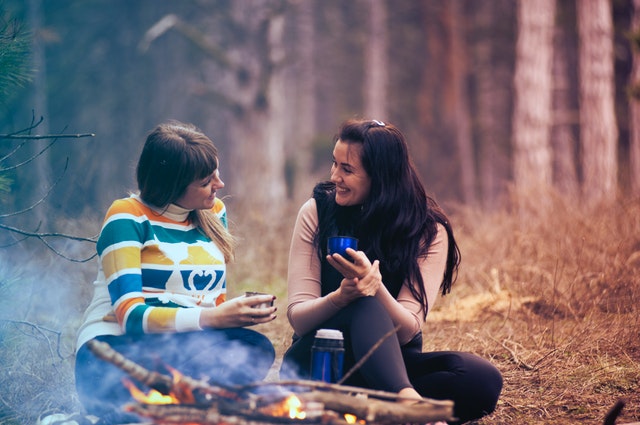
Image Source: Pexels
More than 35 million Americans leave their comfortable homes to sleep in an RV, tent, or simply under the stars. There are many reasons to rough it on a good old fashioned camping trip, stress relief to physical health benefits.
In order for a comfortable, safe, and exciting experience with “Mother Nature,” there are five things you need to know before choosing a campsite so you can enjoy the great outdoors. (See also: 7 Reasons Why Camping is Awesome for Your Health)
Camp on Higher Ground
A couple of meters over the water level should guarantee you don’t wake up in a lake. Another favorable position is that higher areas usually benefit from a greater amount of breeze, which helps repel mosquitoes that like to stay nearby slow-moving waterways and improves wind flow to your tent.
Choose Somewhere Flat and Smooth: Going for a campsite because it offers beautiful views and does not offer any compensation when at 3 am you start sliding slowly downhill in your sleeping bag because the ground wasn’t flat. Furthermore, the flat ground also makes cooking easier for you. Remove any sharp and spiky objects such as stones, pine cones and stick before you pitch the tent.
Camp Near a Water Source: go a stream or huge lake when choosing a campsite; cooking, drinking, and washing water is an important piece of camping. Make sure you pitch up someplace that is close but not very close, in a perfectly more than 60m to water however make sure it’s freshwater so you can use for your daily chores. Furthermore, due to the danger of a flash flood, you’ll need to stay away from camping on low-lying ground in the floodplain.
Search For Shelter when camping: Especially if this will be your base camp for some time. When the sun’s warming rays hit your tent, it will begin to transform into a sauna. Trees give inviting shade but also protect you when it’s windy. So except if you like sleeping in a sauna and feeling the heavy force of the wind, look for a campground under a couple of trees.
Always Plan Ahead
This all works in theory, however in the event that you don’t have an idea about where to set up your portable shelter, vanishing sunlight or rumbling stomachs will dictate where you set up camp. Make sure to use a map guide over the areas to plan where to camp. You don’t have to nail it down to the exact spot, necessarily; however, you ought to have sensible objectives of how far you can trek in a day. If you don’t plan to bring a portable toilet with you, then try to make sure the campsite has porter potty.
Some Safety tips
Proceed with an alert: Camping frequently involves some unpleasant terrain, so try to wear good climbing boots to avoid strains and sprains. Slip-on the right socks and shoes to avoid blisters, and keep a first-aid close by just in case there are a few cuts and scratches along the way.
Stay safe in the sun: Slather on the sunscreen, and wear sunglasses and a cap to keep the sun out. Drink a lot of water to avoid dehydration, as well.
Avoid ticks: Wear high socks, use bug repellent, and stay away from high grass to keep ticks off. In the event that you got attacked by ticks, gently pull it out with tweezers, making sure you do not to squeeze or smash the bug. Make sure you disinfect the area with cleanser and wash your hands quickly. Also, it will be a bonus for you if the campsite is registered to a pest control company
Watch out for bears: As for battling off the furry creatures, ensure the campground’s dirt free and take away all food from the tent. Remember most bears don’t really attack. If by any chance, a wild bear enters a campground, keep in mind that they are commonly timid, so be forceful and make noise, or battle back with sticks and stones if it attacks. Wild bears see people as a threat, so don’t make any unexpected movement. Twist-up in the fetal position and play dead.
About The Author:
Joy is a creative writer who loves to decode boring information and transform them into the simplest, but innovative ideas for positive impact. She is also adept at using writing to generate the best ideas and insights.




